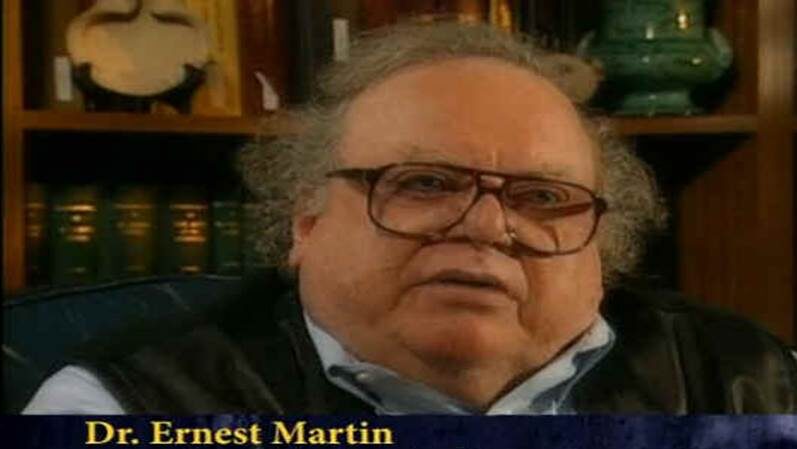We continue, from part 1, part 2, part 3, part 4, part 5, considering Ernest L. Martin, Ph.D.’s article titled, “Lingering Idolatry in the Temple of God,” AskELM (as in Ask Ernest L. Martin about whom I previously wrote Nightmare on AskElm Street – angelic “Sons of God”?), September 1, 2000 AD which contains some interesting point, some thought provoking speculations and some very serious errors.
Martin rightly notes that as per 2 Kings 18, Moses’s God ordained image of a snake was destroyed due to idolatry. Yet, he then merely asserts that “the Israelites also began to worship those two cherubim” and actually specifies that “Even in the wilderness the Israelites had commenced their worship and adoration of those two Cherubim” and he repeats, yet again, “Do these words not smack of a clear violation of the Second Command (of the highly prestigious ‘Ten Commandments’)?” No they do not. But let us see why he claims to be able to be so very specific.
He reiterates “(even while they were still in the wilderness) began to worship those statues and images” and asserts that it was this detailed fact that “infuriated Jeremiah at a later time as well as Ezekiel.” He also claims that “Jeremiah decided to get rid of the Ark of the Covenant and the worship of it by the Israelites.” He claims that Jeremiah “with the confirmation of Ezekiel took the Ark of the Covenant with its idolatrous depiction of Cherubim out of the Holy of Holies and (according to the Book of Second Maccabees)” an apocryphal text which Martin refers to as a “historical work” and it may actually contain accurate history or may not. He quotes the text from verses 1-7, adding bracketed statements along the way and adding a comments in between:
“One finds in the records that Jeremiah the prophet ordered those who were being deported to take some of the fire [from the altar of the Temple], as has been told, and that the prophet after giving them the law instructed those who were being deported not to forget the commandments of the Lord, nor to be led astray in their thoughts upon seeing the gold and silver statues and their adornment.”
There were images and idols in the Temple and some God had commanded to be there. [Continuing on:]
“And with other similar words he [Jeremiah] exhorted them that the law should not depart from their hearts. It was also in the writing that the prophet, having received an oracle, ordered that the tent and the ark [of the covenant with the two cherubs] should follow with him, and that he went out to the mountain where Moses had gone up and had seen the inheritance of God. And Jeremiah came and found a cave, and he brought there the tent and the ark [with the two cherubs] and the altar of incense, and he sealed up the entrance. Some of those who followed him came up to mark the way, but could not find it. When Jeremiah learned of it, he rebuked them and declared: ‘The place shall be unknown until God gathers his people together again and shows his mercy. And then the Lord will disclose these things, and the glory of the Lord and the cloud will appear, as they were shown in the case of Moses, and as Solomon asked that the place should be specially consecrated.’
It was also made clear that being possessed of wisdom Solomon offered sacrifice for the dedication and completion of the temple. Just as Moses prayed to the Lord, and fire came down from heaven and devoured the sacrifices, so also Solomon prayed, and the fire came down and consumed the whole burnt offerings.”

Ernest Martin’s commentary is “So exasperated was Jeremiah about the penchant of the Israelites…to turn physical things that God ordained even in the Temple into idolatrous artifacts that Jeremiah prophesied that in the future NO TEMPLE OF GOD would ever have an Ark of the Covenant again” and he claims that the specific motivation was that “That is the main reason that Jeremiah took” the items “to hide them so that they would not be found to be placed in any Temple after the Babylonian Captivity was over.”
However, this is reading his misunderstandings into the text as it specifies no such thing. What the text does specify is that an unknown document claims that “Jeremiah ordered the deportees to take the fire” which was mentioned in chap 1. Thus, the motivation for hiding the items is that they were deportees: so that those who were conquering them would not steal the items. Nothing is stated about idolatry but only that they should not think to keep it in view as they would be “tempted by the sight of gold and silver statues or the finery adorning them”: the worth and beauty of the items, not idolatry of them. Some sought to find it but are told that it is up to God when to, again, reveal the items. This would mean that God, again, wants people to fall into idolatry which, actually, is exactly what Ernest Martin believes, as we shall see.
Yet, for what it is worth, 2 Maccabees knows of no such thing but simply states that the items will reemerge when “God gathers his people together again and shows them his mercy.” It is even specified that “it was revealed in the time of Moses and when Solomon prayed that the holy place might be gloriously hallowed” and not defiled by idolatrous images.
